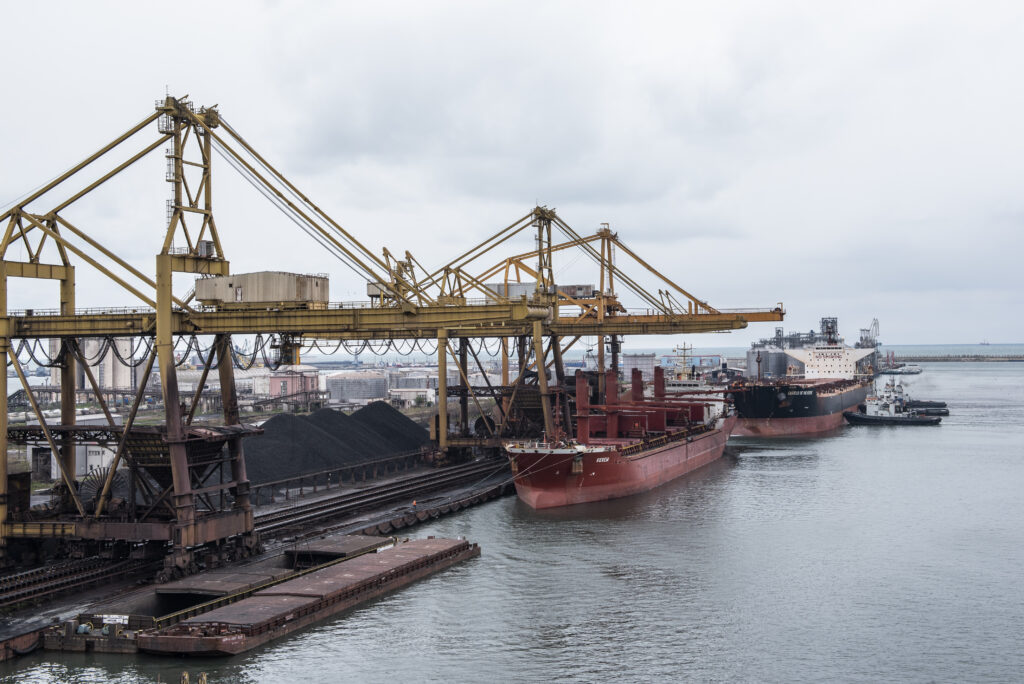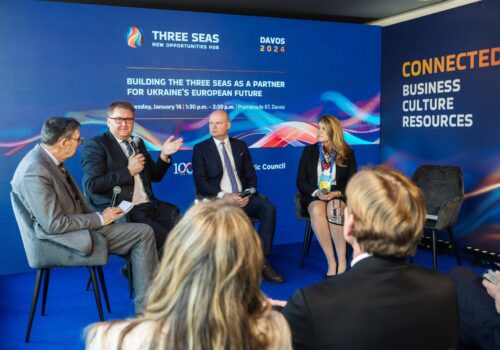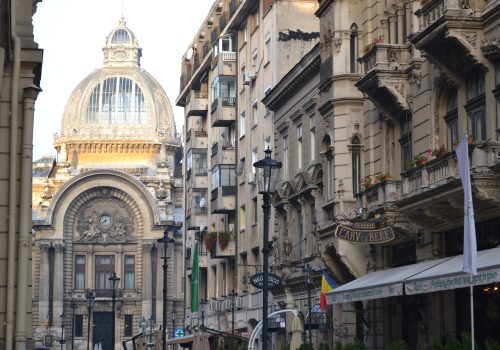Europe’s defense and economic interests are intertwined, especially in the face of a deepening Sino-Russian “no-limits” partnership. In response to this and other challenges, NATO, the European Union (EU), and the Three Seas Initiative (3SI) should prioritize transport corridors connecting the Baltic, Black, and Adriatic seas. These dual-purpose corridors could link major port cities in and bordering the three seas, such as Gdańsk, Constanța, and Trieste. These prospective defense/economic strategic road and rail corridors—let’s call them N3 corridors—would connect the three sides of the transportation triangle bridging the three seas. N3 corridors linking Constanța, Gdańsk, and Trieste would be transformative force multipliers for European peace and prosperity. These corridors would not only fortify Europe and NATO’s eastern front but also offer a dynamic boost to European economies, catalyzing the continent’s economic engagement with the Indo-Pacific. They would also help ensure Ukrainian sovereignty by aiding Kyiv’s European integration.
The 3SI, comprising thirteen Central and Eastern European nations from Estonia to Greece, promotes digital, energy, and infrastructure connections across the region’s north-south axis. It boasts an investment fund and 143 discrete projects across member countries. But despite an enthusiastic beginning, big and bold strategic projects to realize the 3SI’s grand vision have yet to take shape. NATO’s forward posture in response to Russian aggression and the need to bolster the Alliance’s ability to mobilize resources across its eastern front offer a strong impetus to both achieve and expand on the 3SI’s ambitions for connecting the three seas by working with the Alliance and other EU countries to build the N3 corridors.
NATO’s transport needs
At age seveny-five, NATO boasts two new members and a forward posture along its eastern front to confront a resurgent Russia with imperialist designs. The Alliance’s enhanced forward presence, aimed at achieving deterrence by denial of territory, makes it essential to be able to quickly position forces on the front lines and expeditiously move these forces along the front as needed. Most of Europe’s existing rail and road corridors run in the east-west direction. There is an urgent need to complement these latitudinal passageways with the prompt deployment of longitudinal thoroughfares for mobilizing forces along NATO’s eastern front and to deepen the economic integration of Central and Eastern Europe.
Meanwhile, Russia’s ongoing malign activity in the Black Sea subjects NATO’s southeastern front to persistent and provocative Russian aggression. Russia has long used aggression to cement its position on the Black Sea, from the de facto annexation of the Abkhazia and Tskhinvalki (South Ossetia) regions from Georgia in 2008, the annexation of Crimea from Ukraine in 2014, and advances toward Odesa since 2022. Moscow’s Black Sea power projection is further bolstered by the Russian garrison that has been stationed in Transnistria since 1992. Now, Russia is expanding its rail network across Ukrainian territory that Moscow has annexed. Given the threat Russia poses to NATO’s southeastern front, the deployment of N3 strategic corridors is essential to bolstering the Alliance’s ability to mobilize resources to the region.
EU-Ukraine economic integration
Western Ukraine’s expeditious integration—infrastructural, legal, economic, and social—into the European project offers it the most prudent and realistic security assurances in the near to medium term. An N3 strategic rail and road corridor from Gdańsk to Constanța through western Ukraine would be an opportune and impactful manifestation of Ukrainian integration into Europe. This proposed corridor would not only include highways and railways, but would also offer important rights-of-way for power and digital cables as well. Such a strategic corridor would bind the biggest NATO and EU members facing Russia and bordering Ukraine. The Gdańsk-Constanța corridor would not only connect the two major ports but also the respective capitals, Warsaw and Bucharest, via Ukrainian cities Lviv, Ivano-Frankivsk, and Chernivtsi. A short eastern spur may also connect Chișinău, the Moldovan capital, to the N3 corridor. The Ukrainian route offers substantial cost advantages over previous proposals, which would traverse the Carpathian Mountains.
Bucharest to Warsaw rail journeys at present follow a circuitous route via Budapest and Vienna. A new N3 strategic corridor, in addition to obvious economic and military dividends, would boost regional tourism by catalyzing sociocultural integration among the Polish, Romanian, and Ukrainian peoples.
Corridors of power
The N3 corridors would link the leading defense and economic port cities of Constanța, Gdańsk, and Trieste on the Black, Baltic, and Adriatic seas, respectively. Romania represents a stable and reliable anchor for NATO, the EU, and the 3SI on the Black Sea and is projected to be the largest European natural gas producer by 2027. Constanța, situated south of the Danube Delta, is both Romania’s leading commercial port and its primary naval base. Romania represents the European beachhead to the Caucasus and Central Asia as it connects the Danube, Europe’s longest commercial river, to the Black Sea.
Poland boasts the largest economy and military of the NATO/3SI countries bordering the Baltic Sea, Russia, and Ukraine. Gdańsk is Poland’s principal seaport and naval yard, and over the past decade, it has also become the fastest-growing European port. Gdańsk could act as an important junction linking the prospective N3 corridor with the underway 3SI projects Rail and Via Baltica connecting Finland and the Baltic nations.
Trieste, meanwhile, enjoys unmatched access to Europe’s industrial heartland, including northern Italy, Switzerland, Germany, Austria, and parts of Eastern Europe. Consequently, it’s the most advantageously situated seaport to be Europe’s gateway to the Indo-Pacific. It also houses Italy’s major naval yards. Italy, though not a member of the 3SI, is the dominant Adriatic-Mediterranean nation and an important member of both NATO and the Group of Seven (G7).
NATO and the EU should designate the N3 corridors as their individual and collective high priority flagship projects in their Strategic Concept and Strategic Compass planning documents, respectively. Additionally, both should closely engage with 3SI nations and Italy to make N3 corridors operational with due haste. NATO should consider directing a portion of its proposed $100 billion fund for Ukraine to N3 corridors to leverage greater investments from close allies and partners. N3 corridors may arguably offer the highest returns on the EU’s investment in Ukraine reconstruction and in its Global Gateway initiative as an alternative to China’s Belt and Road Initiative. Consequently, in addition to direct EU funds, both the European Bank for Reconstruction and Development and the European Investment Bank should accord N3 corridors preference in their respective investment portfolios. EU and 3SI nations, to further amplify the impact of N3 railroad corridors, should also apportion comparable weight to developing Danube River commercial transit to optimal levels.
The Unites States, an early and enthusiastic supporter of the 3SI, should lend its full weight behind the N3 corridors in fortifying NATO and diversifying global supply chains away from China. It should call for prompt operationalization of N3 corridors at both NATO and US-EU Trade and Technology Council meetings. It should also ensure that the G7’s Global Partnership for Infrastructure Investments accords high priority to N3 corridors. Additionally, the United States and Europe should collectively encourage partner nations in West Asia and the Indo-Pacific to invest in N3 corridors.
The United States, Europe, and NATO need to buttress their collective economic and military resilience to confront both Russia’s military aggression and Chinese economic coercion. The N3 corridors would serve both goals. They would not only better mobilize the full might of Central and Eastern Europe’s defense and military capacities but also potentially transform the region’s engagement with the global economy. No time should be spared in putting this strategic project into action.
Kaush Arha is president of the Free & Open Indo-Pacific Forum and a nonresident senior fellow at the Atlantic Council and the Krach Institute for Tech Diplomacy at Purdue.
Adam Eberhardt is the deputy director of the Centre for East European Studies at Warsaw University.
Paolo Messa is a nonresident senior fellow at the Atlantic Council and founder of Formiche.
George Scutaru is the CEO of New Strategy Center and a former national security advisor to the President of Romania.
Further reading
Wed, Aug 23, 2023
Policy memo: How to sharpen the digital pillar of the Three Seas Initiative
New Atlanticist By Jörn Fleck, Akshat Dhankher, James Batchik
The Three Seas Initiative and its digital pillar currently lack the credibility needed to attract sustained investments.
Mon, Jan 22, 2024
How Ukraine can rebuild in partnership with the Three Seas Initiative, according to leaders at Davos
New Atlanticist By Katherine Golden
Officials and business leaders discussed how the Three Seas Initiative can support Ukraine’s reconstruction.
Thu, Aug 31, 2023
A Three Seas Chamber of Commerce could enhance energy diversification across Central and Eastern Europe
EnergySource By
The Three Seas Initiative (3SI) Summit in Bucharest takes place next week. To catalyze investment and diversify away from Russian energy, the summit should establish a Three Seas Chamber of Commerce, capable of sustaining progress and unleashing the region's full potential.
Image: A pier for loading and unloading minerals inside Comvex facilities at the port of Constanta, the largest port of the Black Sea, Constanta, Romania, April 2022. The port which expanded to its current size during the communist regime times, and is well connected to the Danube river through a canal, it has never been used in its full capacity. Penelope Thomaidi / Hans Lucas via Reuters Connect.



